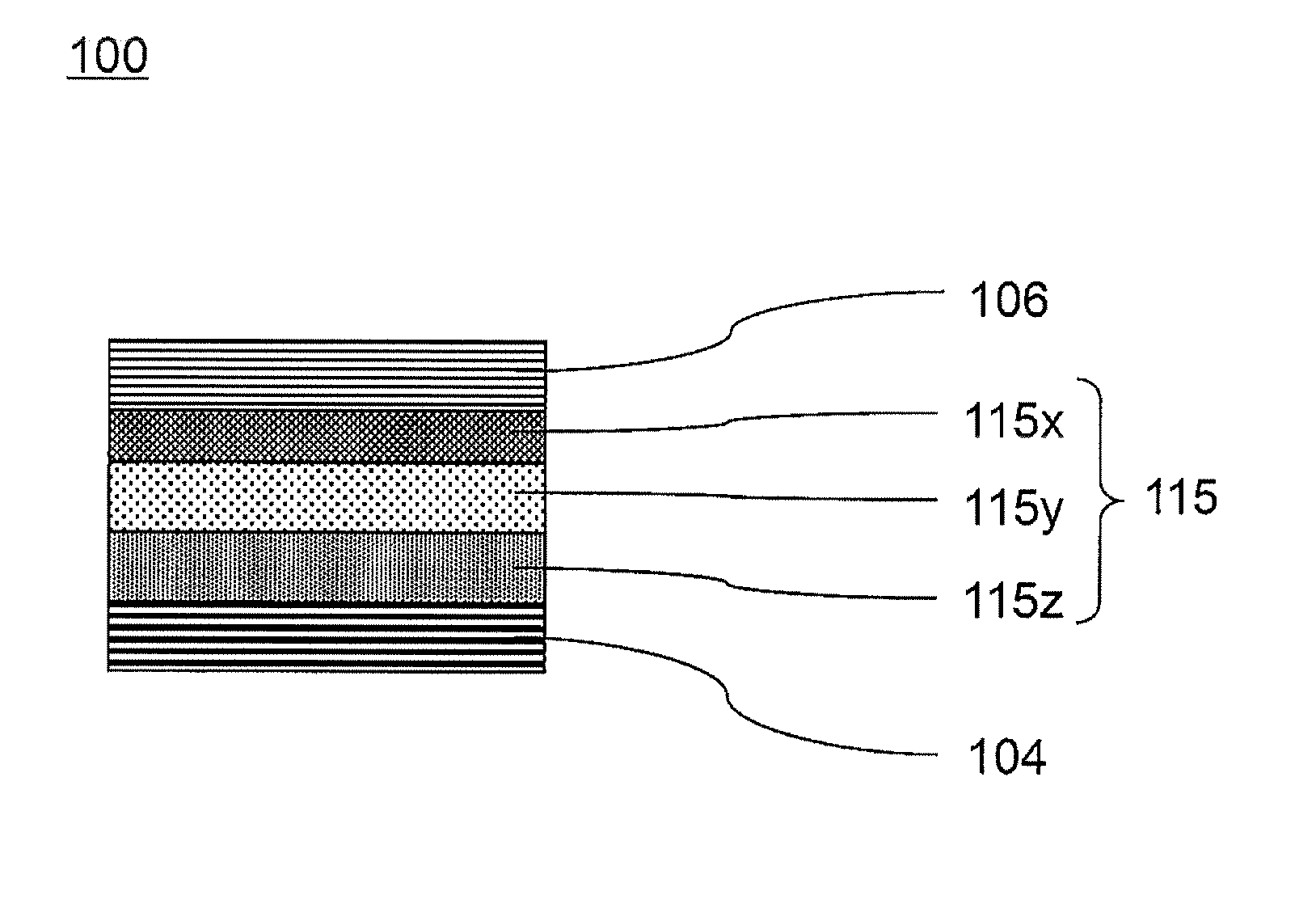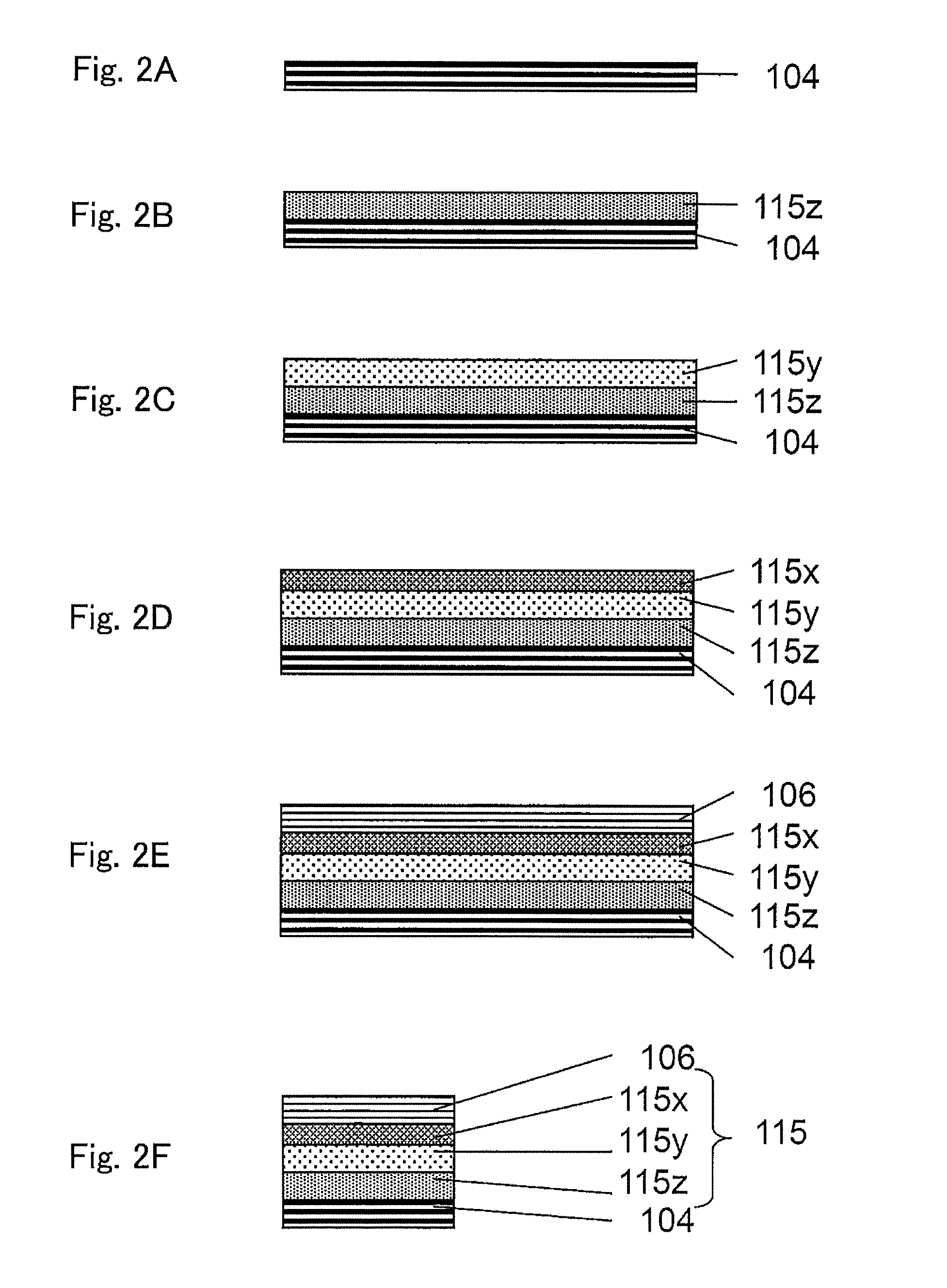Non-volatile memory element and manufacturing method thereof
a technology manufacturing methods, which is applied in the direction of bulk negative resistance effect devices, semiconductor devices, electrical devices, etc., can solve the problems of non-uniform characteristics of non-volatile memory elements, and achieve the reduction of non-uniform read currents corresponding to low-resistance states, easy to ensure a reading margin of current, and suppress non-uniform resistances
- Summary
- Abstract
- Description
- Claims
- Application Information
AI Technical Summary
Benefits of technology
Problems solved by technology
Method used
Image
Examples
embodiment 1
[0058]According to Embodiment 1, a non-volatile memory element comprises a first electrode; a second electrode; and a variable resistance layer which is interposed between the first electrode and the second electrode, and reversibly changes its resistance value in response to an electric signal applied between the first electrode and the second electrode; the variable resistance layer including, when a first metal is M and a second metal is N: a third metal oxide layer having a composition expressed as NOz; a second metal oxide layer having a composition expressed as NOy; and a first metal oxide layer having a composition expressed as MOx such that the third metal oxide layer, the second metal oxide layer and the first metal oxide layer are stacked in this order; wherein when an oxygen content atomic percentage of an oxide of the first metal M in a stoichiometric state is A, an oxygen content atomic percentage of an oxide of the second metal N in a stoichiometric state is B, an oxyg...
modified example
[0128]The non-volatile memory 100 may include a substrate provided with a first wire, a first interlayer insulating layer comprising a silicon oxide layer (300 to 500 nm) formed on and above the substrate so as to cover the first wire, and a first contact plug (diameter: 50 to 300 nm Φ) formed so as to penetrate the first interlayer insulating layer such that the first contact plug is electrically connected to the first wire, and comprising tungsten as a major component.
[0129]Then, the second electrode 104 (in the present embodiment, lower electrode) may be formed on and above the first interlayer insulating layer so as to cover the first contact plug.
[0130]A second interlayer insulating layer comprising a silicon oxide layer (thickness: 300 to 500 nm) may be formed so as to cover the non-volatile memory element 100. A second contact plug (diameter: 50 to 300 nm Φ) comprising tungsten as a major component may be formed to penetrate the second interlayer insulating layer such that th...
embodiment 2
[0175]A non-volatile memory element of Embodiment 2 is the nonvolatile memory element according to any of Embodiment 1 and modified examples of Embodiment 1, and is configured such that a second electrode is disposed above a first electrode.
[0176]A manufacturing method of the non-volatile memory element of Embodiment 2 comprises the steps of forming the first electrode, forming a first metal oxide layer having a composition expressed as MOx (M: first metal) on and above the first electrode, depositing a second metal oxide layer having a composition expressed as NOy (N: second metal) on and above the first metal oxide layer, depositing a third metal oxide layer having a composition expressed as NOz on and above the third metal oxide layer, and forming the second electrode on and above the third metal oxide layer, wherein when an oxygen content atomic percentage of an oxide of the first metal M in a stoichiometric state is A, an oxygen content atomic percentage of an oxide of the seco...
PUM
| Property | Measurement | Unit |
|---|---|---|
| resistivity | aaaaa | aaaaa |
| resistivity | aaaaa | aaaaa |
| thickness | aaaaa | aaaaa |
Abstract
Description
Claims
Application Information
 Login to view more
Login to view more - R&D Engineer
- R&D Manager
- IP Professional
- Industry Leading Data Capabilities
- Powerful AI technology
- Patent DNA Extraction
Browse by: Latest US Patents, China's latest patents, Technical Efficacy Thesaurus, Application Domain, Technology Topic.
© 2024 PatSnap. All rights reserved.Legal|Privacy policy|Modern Slavery Act Transparency Statement|Sitemap



